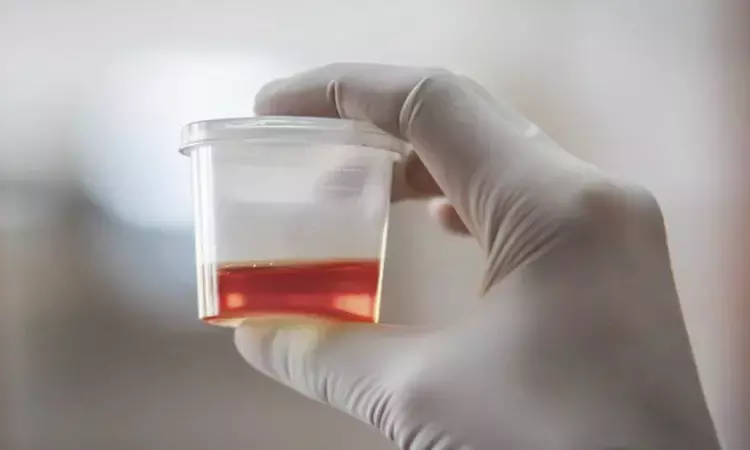- Home
- Medical news & Guidelines
- Anesthesiology
- Cardiology and CTVS
- Critical Care
- Dentistry
- Dermatology
- Diabetes and Endocrinology
- ENT
- Gastroenterology
- Medicine
- Nephrology
- Neurology
- Obstretics-Gynaecology
- Oncology
- Ophthalmology
- Orthopaedics
- Pediatrics-Neonatology
- Psychiatry
- Pulmonology
- Radiology
- Surgery
- Urology
- Laboratory Medicine
- Diet
- Nursing
- Paramedical
- Physiotherapy
- Health news
- Fact Check
- Bone Health Fact Check
- Brain Health Fact Check
- Cancer Related Fact Check
- Child Care Fact Check
- Dental and oral health fact check
- Diabetes and metabolic health fact check
- Diet and Nutrition Fact Check
- Eye and ENT Care Fact Check
- Fitness fact check
- Gut health fact check
- Heart health fact check
- Kidney health fact check
- Medical education fact check
- Men's health fact check
- Respiratory fact check
- Skin and hair care fact check
- Vaccine and Immunization fact check
- Women's health fact check
- AYUSH
- State News
- Andaman and Nicobar Islands
- Andhra Pradesh
- Arunachal Pradesh
- Assam
- Bihar
- Chandigarh
- Chattisgarh
- Dadra and Nagar Haveli
- Daman and Diu
- Delhi
- Goa
- Gujarat
- Haryana
- Himachal Pradesh
- Jammu & Kashmir
- Jharkhand
- Karnataka
- Kerala
- Ladakh
- Lakshadweep
- Madhya Pradesh
- Maharashtra
- Manipur
- Meghalaya
- Mizoram
- Nagaland
- Odisha
- Puducherry
- Punjab
- Rajasthan
- Sikkim
- Tamil Nadu
- Telangana
- Tripura
- Uttar Pradesh
- Uttrakhand
- West Bengal
- Medical Education
- Industry
Management of Patients with Microhematuria: AUA/SUFU guidelines

Recent guidelines regarding the treatment of adult patients with suspected or confirmed cases of Microhematuria were released by the American Urological Association (AUA) and Society of Urodynamics, Female Pelvic Medicine & urogenital reconstruction (SUFU) and were published in JAMA.
The prevalence of microhematuria among healthy patients ranges from 2.4% to 31.1%.1 Although 13.1% of gross hematuria episodes are associated with malignancy, only 0.3% to 6.3% of microhematuria episodes are associated with malignancy.
Characteristics of guidelines score:
The AUA and SUFU developed this guideline with representation from the American College of Obstetricians and Gynaecologists and a patient advocate.
Panellists disclosed conflicts of interest and were disqualified if conflicts compromised objectivity.
Some major recommendations of the latest guidelines were:
Microhematuria should be considered to be more than 3 blood cells per high power field on microscopic evaluation of a urine specimen.
Patients with microhematuria attributed to a gynaecologic or diagnosed urologic etiology, such as urinary tract infection should have repeated urinalysis after resolution of the causative condition.
Clinicians should refer patients with microhematuria and suspected kidney disease to a nephrologist. This should not preclude a risk-based urologic evaluation.
Clinicians should categorize patients with microhematuria as at low, intermediate, and high risk of genitourinary malignancy based on risk factors.
Low-risk patients should engage in shared decision making about repeat urinalysis within 6 months or cystoscopy and kidney ultrasound. Intermediate risk patients should undergo cystoscopy and kidney ultrasound. High-risk patients should undergo cystoscopy and axial upper tract imaging.
Patients whose evaluation for microhematuria is unrevealing may have to repeat urinalysis within 12 months. Patients with persistent or recurrent microhematuria should engage in shared decision making for additional microhematuria evaluation. If subsequent urinalysis for microhematuria is negative, further evaluation may be discontinued.
Reference:
Management of Patients with Microhematuria by Judge C et. al published in the JAMA.
doi:10.1001/jama.2021.4770
Dr. Shravani Dali has completed her BDS from Pravara institute of medical sciences, loni. Following which she extensively worked in the healthcare sector for 2+ years. She has been actively involved in writing blogs in field of health and wellness. Currently she is pursuing her Masters of public health-health administration from Tata institute of social sciences. She can be contacted at editorial@medicaldialogues.in.
Dr Kamal Kant Kohli-MBBS, DTCD- a chest specialist with more than 30 years of practice and a flair for writing clinical articles, Dr Kamal Kant Kohli joined Medical Dialogues as a Chief Editor of Medical News. Besides writing articles, as an editor, he proofreads and verifies all the medical content published on Medical Dialogues including those coming from journals, studies,medical conferences,guidelines etc. Email: drkohli@medicaldialogues.in. Contact no. 011-43720751


